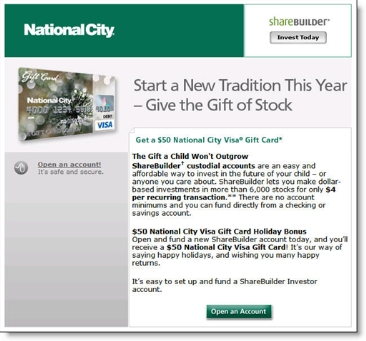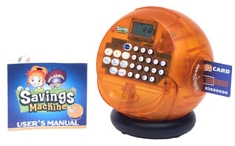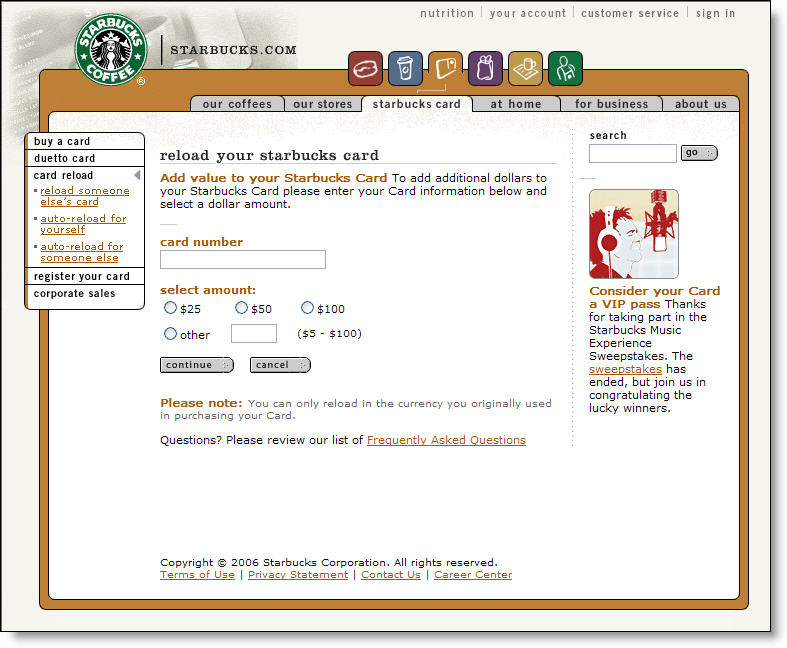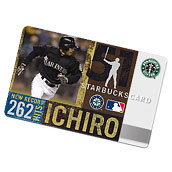 One of the biggest changes in the payments landscape during the past decade is the use of prepaid gift cards, especially during the coming holiday period. According to the National Retail Federation, $28 billion changed hands via prepaid gift cards during the holidays last year, almost $300 per U.S. household.
One of the biggest changes in the payments landscape during the past decade is the use of prepaid gift cards, especially during the coming holiday period. According to the National Retail Federation, $28 billion changed hands via prepaid gift cards during the holidays last year, almost $300 per U.S. household.
Assuming a $50 average load per card, the $28 billion holiday spending translates into more than 500 million individual cards. At a conservative $2 per card in revenues, that's $1 billion at stake during the holiday period alone.
It seems that banks and credit unions would be ideally suited to cash in on this interest. Yet, a recent Marketing Workshop survey revealed that only 1% of gift card purchases during the past year were at banks. Granted, it's difficult to compete with card sales at the end-retailer, but nearly a third of buyers used other channels, a significant revenue opportunity.
Here's a card-purchase breakdown from the last holiday period, according to the National Federation of Retailers (research conducted by BIGresearch, 10 Jan 2007).
- 75%—bought at the store where cards will ultimately be used
- 17%—other brick-and-mortar locations
- 13%—purchased online, retailer-direct
- 4%—third-party website
The directories at Visa and MasterCard (see list below) list only 19 financial institutions offering prepaid cards online. An additional 30 financial institutions sell cards thorough Visa's online site here.
Why such low FI sales?
Back to the original question, why aren't banks more heavily invested in gift card sales (see list of sellers below)? Part of the explanation has to do with the general unwillingness to take on the added fraud exposure, especially from online sales. However, financial institutions can mitigate much of that by offering the cards to established customers only.
Another reason is the lack of merchandising expertise. Bank branches and websites are generally not set up to merchandise spur-of-the-moment products. That weakness can be overcome online with tight integration into the online banking area. If banks had a "gift card" tab available in online banking, I believe it would become the primary option for many customers in the market for a gift card.
Financial institution opportunities
Even though brick-and-mortar sales dominate with an 85% share of transactions, physical locations by no means have a lock on the business. I recently purchased several store cards at a third-party location (Safeway). While it was convenient and free, I wasn't at all sure that the Safeway clerk actually activated the cards, a significant drawback in the buying experience.
It's tempting to think banks could recreate the success of other retailers by selling cards in branch. But without the retail POS systems needed by card wholesalers to plug the bank into their card-selling networks, it can be costly to equip bank branches with a card-selling system. Add to that the expense of training tellers, educating customers, and potentially backing up the teller queue on Christmas eve.
 So the better opportunity for most financial institutions is online sales. You already have the traffic; the technology expense can be centralized in one fulfillment location (or outsourced); and it's easier to educate customers online. Online Resources is one established bank-tech vendor with a turnkey, multi-card solution, CardHQ, introduced last year.
So the better opportunity for most financial institutions is online sales. You already have the traffic; the technology expense can be centralized in one fulfillment location (or outsourced); and it's easier to educate customers online. Online Resources is one established bank-tech vendor with a turnkey, multi-card solution, CardHQ, introduced last year.
Banks and credit unions could become players in this market if they did some or all of the following:
- Expand from Visa/MC/AmEx used by 12% of buyers, to store cards, used by 90% of the market (see list of card types below).
- Provide written activation guarantees with each card.
- Allow users to check balances online or through text messaging.
- Keep prices competitive. Safeway charged ZERO for the Nordstrom card I purchased there, apparently content with the commissions received from the retailer. Because of the activation guarantee, banks could charge a few dollars per card, especially if the card is packaged in an attractive envelope or box that reinforces the guarantee and the bank's brand (see #5).
- Use online banking to promote the cards.
- Offer a variety of packaging alternatives and/or personalization to improve the cards appeal as a gift. Starbucks, the granddaddy of prepaid cards, is offering a $25 package in its stores that includes a personalized $20 card and a gift box. The package is bought in-store, but the personalization is fulfilled online.

Card types
Here's the list of most common card types purchased (offline and online):
- 38%—department store
- 27%—restaurant
- 18%—book store
- 16%—electronics store
- 15%—discount store
- 12%—Visa/MC/AmEx
- 11%—coffee shop
- 11%—home improvement
- 9%—clothing
- 7%—grocery store
- 6%—gas station
- 5%—salon/spa
- 5%—sporting goods
- 4%—home decor/housewares
- 3%—craft store
- 3%—online merchant
- 2%—office supply
- 2%—catalog
- 2%—shoe store
- 10%—other
Source: National Federation of Retailers, research conducted by BIGresearch, 10 Jan 2007.
Companies Offering MasterCard or Visa Gift Cards Online
MasterCard
BankFirst
Western Union Prepaid Card
H&R Block Bank
H&R Block Emerald Prepaid MasterCard
HSBC
HSBC Prepaid MasterCard GiftCard
Keybank
Best Present Holiday Bonus & Incentive Card
MetaBank
AccountNow Vantage Debit MasterCard
NetSpend
All-Access MasterCard Prepaid Card
Washington Mutual
Washington Mutual Prepaid MasterCard Gift Card
Visa
BCU (customers only)
Available to BCU members only
Financial Institution
Comerica (customers only)
Phone: (800) 955-4212
Available to Comerica customers only
Financial Institution
DeluxeCard
Phone: (866) 874-9029
Retailer/Other
Desert Schools FCU (customers only)
Phone: (800) 456-9171
Available to Desert Schools FCU members only
Financial Institution
First National Bank of Omaha
Financial Institution
GiftCards.com
Phone: (877) 944-3822
Retailer/Other
iCARD
Phone: (636) 536-6897
Retailer/Other
IDT Gift2go
Phone: (800) 995-3065
Retailer/Other
M&I Bank
Financial Institution
National City
Phone: 877-990-GIFT (4438)
Financial Institution
Navy Federal Credit Union (customers only)
Available to Navy Federal Credit Union members only
Financial Institution
PNC Bank (customers only)
Available to PNC Bank customers only
Financial Institution
SunTrust
Phone: (800) 318-0210
Financial Institution
U.S. Bank
Financial Institution
Wells Fargo (customers only)
Financial Institution
West Suburban Bank
Financial Institution
Source: Visa, 3 Nov 2007.
 Last summer, I had the opportunity to spend a week in an apartment in Paris’s 6th. The wonderful 1920s building overlooked a transportation solution even older: bicycles.
Last summer, I had the opportunity to spend a week in an apartment in Paris’s 6th. The wonderful 1920s building overlooked a transportation solution even older: bicycles.  Why? Our old-school mag-stripe cards are no longer in step with the international gold standard of security, the imbedded computer chip unlocked by PIN entry, i.e., chip & pin or EMV.
Why? Our old-school mag-stripe cards are no longer in step with the international gold standard of security, the imbedded computer chip unlocked by PIN entry, i.e., chip & pin or EMV. 






 One of the biggest changes in the payments landscape during the past decade is the use of prepaid gift cards, especially during the coming holiday period. According to the
One of the biggest changes in the payments landscape during the past decade is the use of prepaid gift cards, especially during the coming holiday period. According to the 














